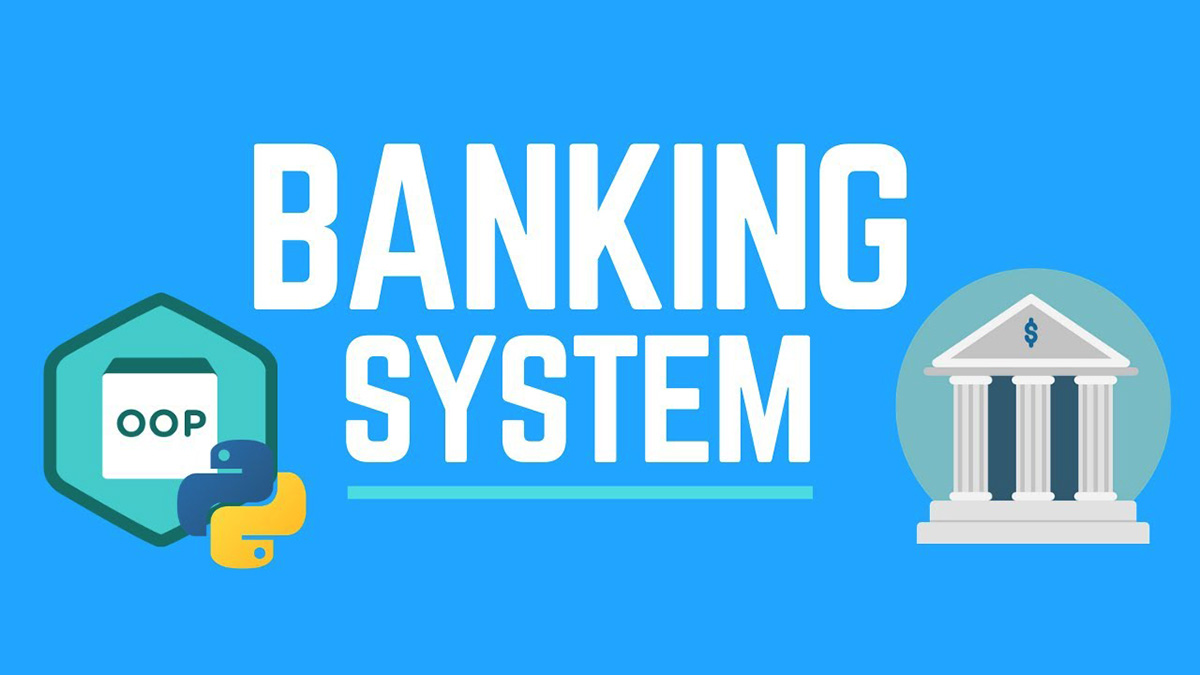Home>Finance>How Did The System Of Patents Encourage Innovation And Investment?


Finance
How Did The System Of Patents Encourage Innovation And Investment?
Published: October 19, 2023
Discover how the patent system drives innovation and investment in the field of finance. Explore the importance of patents for fostering new ideas and attracting financial support.
(Many of the links in this article redirect to a specific reviewed product. Your purchase of these products through affiliate links helps to generate commission for LiveWell, at no extra cost. Learn more)
Table of Contents
Introduction
Welcome to the world of patents, where innovation and investment collide. Patents have been an integral part of the modern economy, fostering creativity, encouraging investment, and driving economic growth. In this article, we will explore how the system of patents has played a crucial role in promoting innovation and investment.
Historically, patents have been granted to inventors as a way to protect their rights and provide them with incentives to continue creating. The idea behind patents is to grant inventors a temporary monopoly on their invention, allowing them to exclusively profit from their innovative ideas for a period of time.
Patents not only reward inventors financially, but they also provide them with a sense of security. The knowledge that their invention is protected by a patent encourages inventors to continue developing new and groundbreaking technologies.
The patent system also benefits society as a whole. It encourages inventors to disclose their inventions to the public, which helps to spread knowledge and promote further research and development. This dissemination of knowledge leads to a cumulative effect, where one invention builds upon another, driving progress and advancement in various fields.
Furthermore, patents play a crucial role in attracting investment. Investors are more likely to fund projects that are protected by patents, as it reduces the risk of competitors copying or stealing the technology. Patents provide a legal framework that ensures a return on investment, thus encouraging investors to support innovation and technological advancement.
In this article, we will delve deeper into the historical background of patents, the objectives they aim to achieve, and the key elements of the patent system. We will explore how patents foster innovation, attract investment, and contribute to economic growth. We will also examine some real-world examples and case studies that highlight the impact of patents on innovation and investment.
However, it is important to acknowledge that the patent system is not without its criticisms. There are ongoing debates about the balance between rewarding inventors and promoting access to technology for the greater good. We will also explore some of the criticisms of the patent system and discuss potential future developments.
So, let’s dive into the fascinating world of patents and discover how they have encouraged innovation and investment throughout history.
Historical Background of Patents
The concept of patents dates back centuries, with early forms of protection for inventors being established in ancient civilizations such as ancient Greece and Rome. However, the modern patent system as we know it today traces its roots to the 15th century.
One of the earliest known examples of a patent system is the Venetian Patent Statute of 1474. This statute granted exclusive rights to inventors for a fixed period of time, providing them with a monopoly to exploit their inventions commercially.
Over the following centuries, other countries started to recognize the importance of protecting inventors’ rights. In 1623, the English Parliament passed the Statute of Monopolies, which granted exclusive rights for a limited time to inventors of new products or processes. This legislation paved the way for the modern patent system and laid the foundation for the protection of intellectual property rights.
The industrial revolution of the 18th and 19th centuries highlighted the need for a robust patent system to encourage technological advancements. As new inventions and innovations rapidly emerged, countries realized the importance of granting inventors a legal framework to protect their intellectual property.
In 1790, the United States became the first country to establish a formal patent system with the enactment of the Patent Act. This act provided inventors with the ability to obtain a patent for their inventions, ensuring exclusive rights for a specified period of time.
Throughout the 19th and 20th centuries, other countries around the world began to develop their own patent systems, each with their own set of regulations and requirements. Today, almost every country has a patent system in place, with some level of harmonization achieved through international agreements such as the Patent Cooperation Treaty (PCT) and the World Intellectual Property Organization (WIPO).
The evolution of the patent system has not been without its challenges. In the early years, the criteria for granting a patent were relatively lenient, leading to concerns about the quality and validity of some patents. As a result, subsequent reforms were implemented to ensure that patents were only granted for truly innovative and non-obvious inventions.
Furthermore, the rapid pace of technological advancements and the emergence of digital technologies have presented new challenges for patent laws. Issues such as software patents and patents for biotechnological inventions have sparked debates and calls for further revisions to patent regulations to address these evolving areas of innovation.
Overall, the historical development of the patent system has paved the way for the protection of intellectual property and the encouragement of innovation and investment. By granting inventors exclusive rights, patent systems have incentivized individuals and businesses to invest in research and development, leading to significant advancements in science, technology, and industry.
Objectives of Patents
The patent system serves several key objectives that are vital for the promotion of innovation, investment, and economic growth. Understanding these objectives helps us grasp the significance of patents in society. Let’s explore them further:
1. Encouraging Innovation: One of the primary objectives of patents is to encourage and reward innovation. By granting inventors exclusive rights to their inventions, patents incentivize individuals and companies to invest time, resources, and effort into research and development. The promise of a limited monopoly on their invention motivates inventors to push the boundaries of knowledge and create new and innovative solutions to problems.
2. Promoting Disclosure and Knowledge Sharing: Patents require inventors to disclose their inventions in detail, providing a roadmap for others to understand how the invention works. This disclosure promotes knowledge sharing and enables further research and development in related fields. By sharing their knowledge, inventors contribute to the collective pool of scientific and technical advancements, allowing society as a whole to benefit from their discoveries.
3. Protecting Intellectual Property: Patents are a means to protect intellectual property, ensuring that inventors have exclusive rights to commercialize their inventions for a limited period. These rights safeguard the investment and effort put into the development of innovative products, processes, or technologies, preventing others from copying or stealing their ideas. By protecting intellectual property, patents promote a fair and competitive marketplace, encouraging inventors to reap the rewards of their creative endeavors.
4. Attracting Investment: Patents play a crucial role in attracting investment. Investors are more likely to fund projects that are protected by patents, as it provides a level of certainty and security. Patents serve as an assurance that their investment will not be easily replicated or duplicated by competitors, increasing the potential return on investment. The presence of a strong patent portfolio can make a startup or an innovative company more appealing to investors, thus facilitating funding for further research and development.
5. Driving Economic Growth: Patents contribute significantly to economic growth. They foster innovation and technological advancements, which in turn drive productivity improvements and create new industries and job opportunities. Patented inventions can lead to the development of new products, improved processes, and enhanced efficiency, benefiting both businesses and consumers and boosting overall economic prosperity.
By fulfilling these objectives, patents play a fundamental role in shaping the innovation landscape and encouraging investment in new technologies and ideas. They provide entrepreneurs, researchers, and inventors with the necessary incentives and protections to take risks, explore new frontiers of knowledge, and ultimately contribute to the advancement of society as a whole.
Key Elements of Patent System
The patent system is a complex framework that grants inventors the exclusive rights to their inventions for a limited period. To understand how the system encourages innovation and investment, let’s delve into its key elements:
1. Novelty: In order to be eligible for a patent, an invention must be new and not already known or publicly disclosed. This requirement ensures that patents are granted only for truly innovative ideas and prevents the granting of monopolies for existing knowledge. Novelty is a crucial element in determining the uniqueness and inventiveness of an invention.
2. Inventive Step/Non-Obviousness: An invention should not be obvious to a person having ordinary skill in the relevant field. In other words, it should involve an inventive step beyond what is already known. The inventive step requirement aims to reward inventors for their creativity and ingenuity, ensuring that only truly innovative and non-obvious inventions can be protected by patents.
3. Industrial Applicability: Patents are granted for inventions that have practical uses and can be applied in various industries. This element ensures that patents protect inventions that are not purely theoretical or speculative but have real-world applications. Industrial applicability guarantees that inventions can be utilized in a commercial setting and contribute to the progress of various sectors.
4. Enablement: The patent system requires inventors to provide enough information in their patent application to enable a person skilled in the field to replicate and practice the invention. This enablement criterion ensures that the technology is adequately disclosed, enabling others to build upon the invention and promote further research and development.
5. Time-Limited Monopoly: A patent grants inventors the exclusive rights to their invention for a limited period of time, typically 20 years from the filing date. This time-limited monopoly provides inventors with an opportunity to recoup their investment, incentivizes further innovation, and encourages the dissemination of knowledge after the patent expires.
6. Examination and Patent Offices: Patents are typically examined by specialized government agencies known as Patent Offices. These offices review patent applications, conduct searches to assess the novelty and non-obviousness of the invention, and determine whether the invention meets the patentability criteria. Patent offices play a crucial role in ensuring that only inventions meeting the necessary requirements are granted patents.
7. Patent Enforcement and Legal Protection: Patents provide inventors with legal protection against infringement. If someone uses, makes, or sells a patented invention without permission, the patent holder can take legal action to enforce their rights and seek remedies for the infringement. This enforcement mechanism is essential for maintaining the exclusivity and value of patents, encouraging inventors to invest in innovation.
These key elements form the foundation of the patent system, ensuring that patents reward and protect true innovations, encourage investment, and promote the sharing of knowledge. By balancing the need to reward inventors with the goal of promoting progress, the patent system creates an environment that fosters innovation and drives economic growth.
Encouragement of Innovation through Patents
One of the primary ways that patents encourage innovation is by providing inventors with the incentive and protection they need to create and develop new ideas. Here are some key ways in which patents encourage innovation:
1. Financial Incentives: Patents offer inventors a temporary monopoly over their invention, allowing them to exclusively profit from their innovative ideas. This financial incentive plays a crucial role in motivating inventors to invest their time, resources, and expertise into research and development. The promise of monetary rewards encourages inventors to take risks, push the boundaries of knowledge, and bring their ideas to fruition.
2. Protection from imitation: Patents protect inventors from others who might try to copy or imitate their invention. The exclusivity provided by patents allows inventors to commercialize their inventions without the fear of immediate competition. This protection creates a safe environment for inventors to invest in further research, explore new applications of their invention, and pursue additional innovations.
3. Disclosure and Knowledge Sharing: In exchange for obtaining patent protection, inventors are required to disclose their invention to the public, providing a detailed description of the technology. This disclosure fosters knowledge sharing and contributes to the overall advancement of society. Other inventors can build upon the disclosed information, leading to cumulative innovation and the development of new technologies.
4. Collaboration and Licensing: Patents can also spur innovation by encouraging collaboration and licensing agreements. When a patent holder licenses their invention to others, it allows different parties to utilize and build upon the patented technology. This collaboration fosters cross-pollination of ideas and expertise, leading to new innovations or improvements on existing inventions. Licensing can also generate revenue for inventors, enabling them to fund further research and development.
5. Market Recognition and Credibility: Patents confer a sense of legitimacy and credibility to inventors and their innovations. It demonstrates to the market that their ideas have been recognized and protected by the patent office. This recognition can attract attention from investors, potential partners, and customers, enhancing the inventors’ ability to secure funding, form strategic alliances, and bring their inventions to market.
6. Technology Diffusion: Patents contribute to the diffusion of technology across industries and geographic regions. Inventors often take advantage of patent licensing and technology transfer agreements to disseminate their inventions to other businesses and industries. This proliferation of technology improves productivity, efficiency, and competitiveness, benefiting a wide range of sectors and driving overall economic growth.
By providing inventors with financial incentives, protection, and opportunities for collaboration and knowledge sharing, patents create an environment that encourages and rewards innovation. This system gives inventors the confidence and support needed to transform their ideas into reality, resulting in groundbreaking discoveries, technological advancements, and societal progress.
Role of Patents in Investment and Economic Growth
Patents play a significant role in stimulating investment and fostering economic growth. By providing inventors with exclusive rights to their inventions, patents incentivize investment in innovative ideas and technologies. Here are some key ways patents contribute to investment and economic growth:
1. Investor Confidence: Patents provide investors with a level of confidence and security when considering funding opportunities. Investors are more willing to allocate capital to projects that are protected by patents because they reduce the risk of competitors replicating or stealing the technology. The assurance of exclusive rights and potential market dominance increases the likelihood of securing investment, allowing inventors to access the necessary funds to further develop and commercialize their inventions.
2. Incentive for R&D Investment: Patents serve as a crucial incentive for businesses to invest in research and development (R&D) activities. The prospect of obtaining a patent and reaping the exclusive benefits associated with it motivates companies to allocate resources towards innovation. Investment in R&D drives technological advancements, improves productivity, and creates new products and services. This, in turn, drives economic growth, as companies become more competitive and able to meet the evolving needs of the market.
3. Technological Advancements: Patents promote the creation and diffusion of new technologies, spurring innovation and advancements across various industries. The exclusive rights granted through patents allow inventors to dedicate resources to improving their inventions and developing cutting-edge solutions. Over time, these technological advancements enhance efficiency, increase productivity, and drive overall economic growth by enabling businesses to operate more effectively and create new market opportunities.
4. Licensing and Technology Transfer: Patents provide inventors with the opportunity to license their inventions to other businesses. Licensing agreements allow for the widespread use and adoption of patented technologies, encouraging innovation and economic growth. Through licensing and technology transfer, patents facilitate the exchange and dissemination of knowledge between inventors and potential users, leading to the development of new products, services, and industries.
5. Job Creation: The patent system contributes to job creation by fostering innovation and driving economic growth. As companies invest in R&D and bring new patented technologies to market, they create demand for skilled labor. These technologies often require specialized knowledge and expertise, leading to the creation of new job opportunities in research, development, manufacturing, marketing, and related fields. Job creation not only improves individual livelihoods but also strengthens the overall economy.
6. Global Competitiveness: Patents play a crucial role in enhancing a country’s global competitiveness. Nations with strong patent systems attract foreign direct investment and encourage innovative companies to establish a presence within their borders. By providing inventors with legal protection and a favorable business environment, patents help countries build a reputation for innovation and attract talent, capital, and technology. This leads to vibrant economies, increased trade, and a positive impact on the overall balance of payments.
In summary, patents act as catalysts for investment and economic growth. By incentivizing R&D investment, promoting technological advancements, facilitating licensing and technology transfer, and contributing to job creation, patents create an ecosystem that encourages innovation, fosters competition, and drives economic prosperity.
Case Studies and Examples
Examining real-world case studies and examples can provide valuable insights into the impact of patents on innovation and investment. Let’s explore a few notable examples:
1. Pharmaceutical Industry – Pfizer’s Viagra: The development and patenting of Pfizer’s Viagra (sildenafil) is a compelling case study. The patent protection granted to Viagra allowed Pfizer to exclusively market and sell the drug, resulting in substantial financial returns. The strong patent rights provided the company with confidence to invest in the extensive research and clinical trials required for FDA approval. The success of Viagra not only revolutionized the treatment of erectile dysfunction but also propelled Pfizer’s growth and encouraged further research and development in the pharmaceutical industry.
2. Tech Industry – Apple’s iPhone: Apple’s iPhone disrupted the mobile phone industry with its innovative design and user-friendly features. Patents played a crucial role in protecting the unique functionalities and design elements of the iPhone. By securing patents for its technology and user interface, Apple was able to safeguard its inventions from competitors, maintain a competitive advantage, and drive customer demand. The strong patent portfolio of Apple has also facilitated licensing agreements and cross-licensing arrangements, further enhancing innovation and economic growth within the tech industry.
3. Renewable Energy – General Electric’s Wind Turbine: General Electric (GE) is a prime example of how patents drive innovation in the renewable energy sector. GE holds numerous patents related to wind turbine technology, allowing the company to protect its inventions and establish a dominant position in the market. The exclusive rights provided by patents have encouraged GE to invest in research, development, and manufacturing facilities, creating innovative wind turbines with improved efficiency and performance. These advancements have contributed to the growth of renewable energy, reduced carbon emissions, and boosted the global transition towards clean and sustainable power generation.
4. Biotechnology – CRISPR-Cas9 Gene Editing: The CRISPR-Cas9 gene editing technology revolutionized the field of biotechnology. The patent rights obtained by Jennifer Doudna and Emmanuelle Charpentier for their groundbreaking invention allowed them to commercialize and license the technology. The resulting patent battles and licensing agreements have stimulated investment and innovation in the biotech industry. The accessibility of CRISPR-Cas9 technology has opened up new possibilities for precise gene editing, with potential applications in healthcare, agriculture, and energy sectors.
These case studies demonstrate the pivotal role of patents in incentivizing and protecting innovation across a range of industries. Patents provide inventors with the confidence to invest in research and development, attract investment and funding, enable licensing agreements, and stimulate economic growth. The examples further highlight the transformative impact of patents on technological advancements, industry competitiveness, and societal progress.
Criticisms of the Patent System
While the patent system plays a crucial role in incentivizing innovation and investment, it is not without its criticisms. Here are some of the key criticisms raised regarding the patent system:
1. Patent Trolls and Patent Wars: One criticism revolves around the rise of patent trolls, also known as non-practicing entities (NPEs). These entities acquire patents solely for the purpose of generating revenue through licensing fees or lawsuits, rather than actively developing or commercializing the patented technology. Patent trolls often target small businesses and startups, draining resources through legal disputes. Additionally, the proliferation of overlapping patents among different companies can lead to costly patent wars, impeding innovation and stifling competition.
2. Patent Quality and Patent Office Backlogs: Another critique is the issue of patent quality. Some argue that the patent system grants patents for inventions that lack novelty or involve obvious combinations of existing technologies. The granting of weak or overly broad patents can hinder competition and abuse the patent system. Moreover, the backlog of patent applications in some Patent Offices can result in delays and inconsistencies in the examination process, further impacting patent quality.
3. Patent Thickets and Licensing Challenges: The increasing complexity of technology has led to the creation of extensive patent thickets – overlapping patents owned by multiple companies. These thickets can create barriers to innovation and make it difficult for inventors to navigate the patent landscape. Licensing negotiations can become complex and costly, as companies need to secure rights to multiple patents from different owners, hindering collaboration and impeding innovation.
4. Access to Knowledge and Hindrance to Collaboration: Critics argue that patents can restrict access to knowledge and hinder collaboration among researchers and inventors. The requirement to disclose inventions in patent applications can limit the free flow of information, making it more challenging for others to build upon existing knowledge. This can slow down the pace of innovation and delay breakthroughs, particularly in industries where collaboration and openness are crucial, such as scientific research and software development.
5. Patent Monopolies and Market Distortion: Some critics argue that the temporary monopolies granted through patents can distort markets and limit consumer choices. Patent holders can charge high prices for their patented products or technologies, creating barriers to entry for competitors. This can result in inflated costs for consumers and hinder the diffusion of technology, particularly in sectors that rely on patented innovations.
These criticisms highlight the need to strike a balance between protecting inventors’ rights and fostering competition and access to knowledge. Ongoing efforts to address these concerns include patent system reforms, technology-sharing initiatives, and patent quality improvement programs. By addressing these criticisms and continuously refining the patent system, we can ensure that it remains a catalyst for innovation and investment while minimizing potential drawbacks.
Future of Patents and Innovation
The future of patents and innovation is shaped by advancements in technology, evolving business models, and societal demands. In this dynamic landscape, several key trends and developments are influencing the patent system and its role in fostering innovation:
1. Emerging Technologies: Rapid advancements in emerging technologies such as artificial intelligence, blockchain, 3D printing, and biotechnology present new challenges and opportunities for the patent system. These fields require tailored patent regulations and examination processes to ensure that innovation is effectively protected. As novel technologies continue to emerge, Patent Offices must stay ahead of the curve, adapt their practices, and maintain a balance between encouraging innovation and avoiding overly broad or weak patents.
2. Open Innovation and Collaboration: The future of innovation is increasingly driven by collaboration and open innovation models. Companies are recognizing the value of sharing knowledge, partnering with other organizations, and leveraging each other’s expertise to accelerate innovation cycles. This trend challenges traditional notions of exclusive patent rights and raises questions about how the patent system can support and encourage collaborative innovation models while still protecting inventors’ rights.
3. Global Harmonization and Standardization: With technology transcending national borders, there is a growing need for global harmonization and standardization of patent laws. International cooperation and agreements, such as the Patent Cooperation Treaty (PCT) and the efforts of organizations like the World Intellectual Property Organization (WIPO), aim to streamline patent processes, promote consistency, and reduce complexities in obtaining patent protection worldwide. This harmonization supports cross-border collaboration and facilitates a more efficient and user-friendly patent system.
4. Balance Between Access and Incentives: The tension between granting exclusive rights to incentivize innovation and ensuring access to patented technologies for the greater good continues to be a topic of debate. Striking the right balance is crucial to avoid hindering progress or compromising public welfare. Future developments may focus on refining patent policies to ensure that they encourage invention while striking a fair balance between promoting innovation and enabling broad access to technology and knowledge.
5. Patent Reform and Quality Improvement: To address concerns about patent quality, patent offices are implementing reforms and quality improvement programs. The goal is to enhance examination processes, encourage greater transparency, and ensure that patents are granted for truly innovative and non-obvious inventions. Continued efforts to enhance patent quality will contribute to maintaining the value and integrity of the patent system in an ever-evolving innovation landscape.
6. Ethical Considerations: As technology continues to advance, ethical considerations surrounding patentable inventions come to the forefront. Issues such as patentability of genetic materials, software algorithms, and artificial intelligence raise questions about the boundaries and impact of patents on various societal aspects. Addressing ethical concerns is crucial to ensure that the patent system aligns with evolving societal expectations and ethical guidelines.
The future of patents and innovation is both exciting and complex. Adapting to emerging technologies, fostering collaboration, ensuring global harmonization, promoting access to technology, and maintaining patent quality are critical factors that will shape the future of the patent system. By navigating these trends and embracing the evolving needs of inventors, businesses, and society, the patent system can continue to drive innovation, encourage investment, and contribute to the betterment of our world.
Conclusion
The patent system serves as a cornerstone for encouraging innovation, driving investment, and fostering economic growth. By granting inventors exclusive rights to their inventions, patents provide the necessary incentives and protections to spur creativity, attract funding, and promote technological advancements. Patents fulfill essential objectives, including rewarding inventors, promoting disclosure and knowledge sharing, protecting intellectual property, and attracting investment.
Through case studies and examples, we have seen how patents have played a significant role in various industries, such as pharmaceuticals, technology, renewable energy, and biotechnology. These examples demonstrate the transformative impact of patents on innovation, market competitiveness, and societal progress.
However, the patent system is not without criticisms. Concerns such as patent trolls, patent quality, access to knowledge, market distortion, and licensing challenges highlight the need for ongoing reform and improvement. Addressing these criticisms will ensure that the patent system continues to strike a balance between rewarding inventors and promoting access to technology for the greater good.
The future of patents and innovation will be shaped by advancements in technology, the rise of collaborative models, global harmonization, ethical considerations, and ongoing efforts to improve patent quality. Adapting to these trends is crucial to maintaining the effectiveness and relevance of the patent system in a rapidly changing world.
In conclusion, the patent system remains a vital mechanism for encouraging invention, stimulating investment, and contributing to economic growth. By supporting inventors, protecting intellectual property, promoting collaboration, and adapting to emerging needs, the patent system will continue to drive innovation and shape a brighter future for society as a whole.














